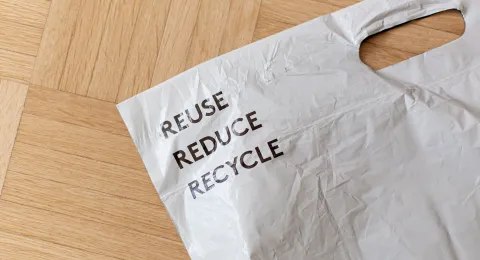Sustainable consumption offers companies a wealth of opportunities to develop their business. Unsustainability no longer provides a competitive edge – quite the contrary, in fact. Most companies launch bold new initiatives by addressing matters such as material selections and the fairness of their production chain.
A study by the Finnish Business and Society (FIBS) network indicates that two out of three business enterprises have made significant investments in sustainability, but only 13 percent have given up unsustainable business practices. In other words, the responsibility for sustainable choices weighs most heavily on the regular consumer. On the other hand, 81 percent of consumers find it somewhat or very difficult to recognize genuinely sustainable products.
What are the key points a company should understand about sustainable consumption? Answers to this and other questions are given by Laura Olkkonen, associate professor at LUT Business School; Heli Kurjanen, CEO of the menstrual cup company Lunette; Riikka Joukio, executive vice president for sustainability and public affairs at Kesko; and Kirsi Salonen, former executive director of Eetti. Salonen is now a junior researcher at LUT, writing her dissertation on regenerative business.
Where are the market gaps for the sustainable consumption and business?
- Olkkonen: “The easiest way to make business out of sustainable consumption is to make sustainability the starting point for your operation. That way, you can be part of the systemic change. Changing existing business operations is a much longer road.”
- Salonen: “The circular economy still holds many untapped opportunities, such as the sharing and reuse of items.”
- Joukio: “The transition to renewable energy has great impacts. Also, sustainability is no longer an option but a necessity – licence to operate.”
- Kurjanen: “Corporate social responsibility offers great business opportunities with far-reaching impacts for all of society.”

What’s the least a company should do?
- Salonen: “Communicate accurately about your company's activity.”
- Joukio: “Think about the entire value chain – from production to consumption and circularity.”
- Kurjanen: : “Just get started. It doesn't have to be perfect right away.”
- Olkkonen: “Make bold choices. Don't stand on the sidelines.”
What makes a regular citizen consume sustainably?
- Ease: a sustainable product should be the so-called default option.
- Encouragement: the choice should evoke positive feelings without guilt.
- Tangibility: consumers should know about the positive outcomes of the purchase.
- Customization: different arguments motivate different target groups.
Source: Post-doctoral Researcher Jenni Sipilä, Research Council of Finland
How can a company promote sustainable consumption?
- Olkkonen: “Companies should turn their targets into extensive action. In addition, they can strengthen their societal role by participating in public dialogue on what should be done by whom.”
- Salonen: “Sustainable consumption alone can't solve consumption-related problems. Consumption should also be reduced and other actors challenged to operate responsibly. Unsustainability can no longer provide a competitive edge.”
- Joukio: “The entire value chain generates emissions, which means a company should also pay attention to the manufacture, use and disposal of its products. Suppliers and customers should also be encouraged to make responsible choices.”
- Kurjanen: “Sometimes a company needs to educate consumers to use new products and spark discussion about new issues.”
Sustainable consumption glossary
- Sustainable consumption = product and service use that satisfies current needs without depriving future generations of the possibility to satisfy their needs / conscious, responsible and mindful purchasing, sustainable choices and reduced consumption
- Greenwashing = making activity appear more sustainable than it actually is by, for example, focusing on minor details
- Greenwishing = setting sustainability targets but not taking concrete action to achieve them
- Greenhushing = keeping silent about sustainability actions in fear of being labeled a greenwasher
- Carbon footprint = the environmental burden of a product, activity or service; that is, the amount of greenhouse gas emissions released during the life span of a product or service
- Environmental handprint = the positive environmental impacts of an organization, product, or service
Sources: Gro Harlem Brundtland, 1987, LUT University’s strategy seminar, Seven questions and answers on LUT’s climate targets
The article is based on the strategy seminar Vastustamaton vastuullisuus held on LUT University’s Lappeenranta campus on 17 May 2023. The seminar was moderated by Sami Sykkö, professor of practice at LUT Business School.
More information:

Laura Olkkonen









